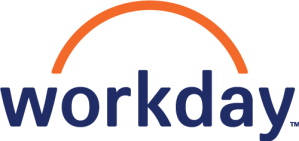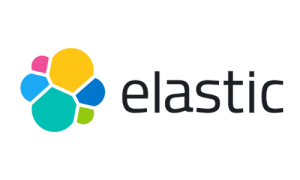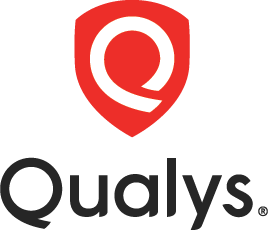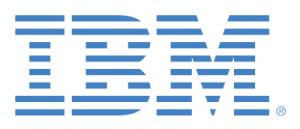Singapore CIO Summit
Architecting an AI-Fueled Business
Driving Innovation and Trust
In 2025, AI will continue to dominate business strategies across the ASEAN region, driving innovation and competitiveness. The early scramble to experiment with AI is over, as organizations shift towards a more inclusive view of AI-fueled businesses and economies.
As Singapore spearheads the region’s AI journey, it serves as a model of adoption, with initiatives spanning government, academia, and corporate investments. Nearly half of regional business leaders plan to increase their AI investments by 20% or more, and many anticipate a 300% return on these investments. Yet, AI presents challenges that require a forward-thinking approach—addressing critical concerns like data governance, skills shortages, infrastructure, security, and trust.
Leading AI-Driven Transfor
The CIO’s role is evolving into that of a strategic business leader, responsible not only for technological adoption but also for driving digital business strategies. In this era of digital transformation, CIOs must harness AI alongside other priorities—such as cybersecurity, sustainability, and digital trust—to build resilient, agile organizations.




Venue
Global influencers shared powerful stories of how they confronted challenges — and created opportunities from them

Sands Expo & Convention Centre
10 Bayfront Ave, Singapore 018956
Lorem ipsum dolor sit amet, consectetuer adipiscing elit. Aenean commodo ligula eget dolor. Aenean massa. Cum sociis natoque penatibus et magnis dis parturient montes, nascetur ridiculus mus. Donec quam felis, ultricies nec, pellentesque eu, pretium quis, sem.
Knowledge Hub
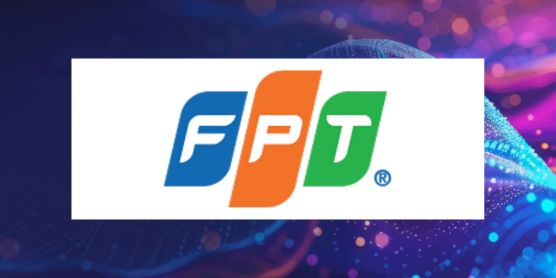
Partner Spotlight Top 5 AI Trends in 2025
FPT
Last year saw organizations truly begin to harness and reap business value from AI and generative AI (GenAI). In 2025, enterprises are set to continue harnessing this cutting-edge technology to enhance employee productivity and drive sustainability efforts.
The Rise of Agentic AI
Unlike traditional AI tools, agentic AI can make decisions independently and adjust its actions based on its environment. Agentic AI operates through advanced ML algorithms that enable it to learn from experience, adapt to new situations, and make decisions with minimal human intervention. This flexibility allows AI agents to manage customer service interactions or analyze vast data sets.
Increased AI Use in Software Development
AI-driven solutions are revolutionizing software development by identifying bugs, generating code, and reviewing errors to improve efficiency. AI tools like FPT’s CodeVista help developers understand large codebases, reverse engineer components, and identify areas for migration, which reduced development time by 48%.
AI in Cybersecurity and Defense Systems
As cyberthreats grow more sophisticated, businesses face increasingly complex security risks. Thus, AI is critical in strengthening cybersecurity for enterprises. ML algorithms can analyze network traffic in real time to detect suspicious behavior and flag potential threats. AI helps protect data privacy across cloud environments by continuously monitoring access patterns to detect unusual activities, ensuring that only authorized users have access to sensitive information. Furthermore, AI can ensure compliance with privacy regulations by analyzing data usage to align with legal and organizational requirements.
More Efforts in Regulating AI
As AI evolves, regulating its use has become a priority for governments worldwide. In Asia, AI regulations mainly stem from data privacy laws. For instance, Singapore integrated GenAI developments into its Model AI Governance Framework, and China released a draft of AI regulations to secure data training processes.
AI’s Bigger Impact in Sustainability
AI is a key driver in the green revolution, helping reduce greenhouse gas emissions by optimizing energy use across industries. In the Asia/Pacific region, which hosts the largest number of datacenters globally, countries like Vietnam are prioritizing sustainability by building eco-friendly datacenters.
Driving Innovation with FPT
While AI continues to transform businesses, navigating the evolving landscape can be challenging. Thus, FPT can be a trusted partner in promoting safe and ethical use of AI to drive digital transformation success.

CXO Spotlight Unlocking AI’s Potential: The Case for Data Quality & Connectivity
Tam Trinh,
Chief Data & Analytics Officer, Nikel
In an era where AI-driven insights can redefine competitive advantage, there has never been a more critical time for firms to invest in data quality and break down data silos. The explosion of machine learning, explainable AI, and large language models (LLMs) presents unprecedented opportunities — but these technologies are only as powerful as the data they rely on. Inaccurate, fragmented, or inaccessible data limits their potential and can lead to costly missteps.
To achieve this, organizations must establish robust data governance and management frameworks. Success also hinges on having data champions — leaders who recognize the transformative power of data and drive cultural, organizational, and operational changes. These champions should identify high-impact use cases where strong data foundations can deliver clear, demonstrable value, making it easier to gain buy-in from stakeholders. By securing early wins, firms can create a positive feedback loop, improving data quality and maximizing the benefits of AI/ML-driven decision-making across critical functions.

CXO Spotlight Unlocking Next-Generation Intelligence: The Continuing Evolution of AI
Jackson Ng,
Chief Operating Officer & Chief Technology Officer, Azimut Investment Management
In 2025, the narrative around AI shifts from augmentation to agency. With agentic AI taking center stage and humanoid robotics gaining traction, I anticipate AI evolving beyond its foundation of large language models (LLMs) to include large behavioral models (LBMs) — which predict human behavior — and large action models (LAMs) — which execute context-aware actions.
While LLMs have revolutionized human-machine interaction through natural language processing (NLP), LBMs and LAMs could unlock next-generation intelligence trained on multimodal data integrating language, behavior, and actions. This shift could propel AI from a tool to an adaptive collaborator, elevating human potential to unmatched levels.
Amid AI’s rapid advancement, debates over it surpassing human intelligence become increasingly irrelevant — what matters now is how we collaborate with it. We must integrate AI as an extension of human capability, embedding it into how we acquire knowledge, make decisions, and take action. This integration could emerge in financial services, for instance, where LAMs dynamically adjust portfolios based on LBM-predicted client behaviors, while LLMs synthesize market insights in real time with humans shaping decision-making and relationship management.
The next leap in human-machine relationships should be deeply personalized, where AI adapts to — rather than augments — our strengths and needs.

Analyst Spotlight The AI Everywhere Era in the Public Sector
Massimiliano Claps,
Research Director, IDC
AI and GenAI are having an increasingly pervasive impact on government — across missions, use cases, processes, and systems — in the Middle East and beyond. The disruptive impact of these technologies, compounded by geopolitical volatility, technical debt, digital sovereignty concerns, elevated citizen expectations, and regulatory changes, will require government leaders to approach innovation holistically. The acquisition and implementation of new technologies will not be enough. Realizing the benefits of AI, cloud, and industry platforms will require revisiting governance, risk management, culture, and the building of competencies to accelerate innovation.
Realizing the Value of AI at Scale in the MEA Region
The advent of GenAI prompted a surge of experimentation. Governments piloted GenAI for task automation, such as summarizing meeting minutes, drafting RFI and RFP documents for public tenders, creating job requisitions, synthesizing information to respond to freedom of information requests, and conducting research for the preparation of policy briefs. As pilot projects empowered them to evaluate benefits and risks, national governments and smart cities started to invest in scaling both traditional AI/ML and GenAI systems to address more complex industry-specific scenarios, such as service and benefits personalization, clinical care, and traffic safety. AI-enabled digital assistants started to help citizens interact with systems through conversational interfaces, instead of having to scroll through screens and fill out forms. Employee digital assistants started to help expert government case managers review, validate, and respond to citizen requests in a more holistic and personalized manner.
AI-powered governments will need to rethink their strategies, governance, people, and technologies to effectively adopt AI. This radical transformation will require governments to establish senior leadership roles that can build organizational capacities and competencies; design and enforce governance policies, structures, and processes; and deploy data and AI infrastructure, platforms, and application capabilities that align with strategic mission goals — all while complying with regulation.
To achieve this level of automation, CAIOs need to work with line-of-mission and program leaders to re-engineer processes and systems so they can apply algorithms that recognize changes in their constituents’ circumstances, identify the root causes, and trigger operational workflows or dynamically reconfigure services and programs to meet constituents’ evolving needs and preferences.
From an architectural standpoint, this level of end-to-end process automation will require a combination of agents that will provide multimodal capabilities to process text, rules, and images, and will be orchestrated to deliver intended outcomes across end-to-end workflows.
To generate the desired outputs and outcomes from the application of AI and GenAI, government CAIOs and chief data officers need to feed data-hungry algorithmic training and fine-tuning. To avoid using low-quality datasets, which grow bias and hallucination, lower accuracy, and increase the risk of intellectual property infringement and other ethical and compliance risks, governments will invest in data logistics and control planes and establish governance polices and processes that enable them to control quality, reliability, and integrity of datasets.
Hybrid, multicloud environments are becoming the cornerstone for governments wanting to modernize their infrastructure, transform their applications, and take advantage of innovations such as AI and GenAI. FinOps practices and tools need to be in place to control costs, particularly as innovative capabilities are being tested and then scaled. AI will augment FinOps tools too, to optimize cloud resource sizing and usage, increase the transparency and accountability of cloud costs and carbon footprints, and detect anomalies.
Governments consider AI not only a tool for efficiency improvement, but a national strategic asset. They want to be able to harness AI to drive opportunities for the national AI innovation ecosystem and secure data and technical independence. This will drive new policy requirements for sovereign AI controls, such as data governance, data localization, and control requirements; scrutiny over hardware and software bills of material, algorithmic transparency, data protection, cybersecurity, and the ethical use of AI; and investments in local knowledge transfer. As a result of some of these policies, global cloud and AI platform companies have significantly increased their investments in local infrastructure and operations in the MEA region, with the Saudi Arabia and the UAE being the main beneficiaries.
As AI becomes more pervasive, robust security controls must be put in place, starting early on in the design stage for the hybrid, multicloud environments where these systems will be deployed. Security controls, along with updated governance policies and literacy programs, will be critical to ensure responsible AI innovation that minimizes the risk of misuse, such as generating misinformation, deepfakes, or biased content, as well as avoiding exposing systems to attacks and loss of sensitive and critical data.
Government CIOs and CAIOs that have a mandate to realize the benefits of AI at scale will have to develop trustworthy collaborative approaches to identify early wins, establish responsible AI governance and cybersecurity best practices, embed sovereignty principles in platform procurement and implementation, and apply FinOps best practices and tools to control the cost of innovation.

Analyst Spotlight Enabling AI Outcomes with Cybersecurity
Frank Dickson,
Group Vice President, Security & Trust, IDC
GenAI was coming. Predictive AI was coming. No . . . wait, it was already here. Anyway, we sit here today focused on the art and the genuineness of the possible.
As we consider and dream of the possible, we sometimes forget the reality of the now. Between the hype around GenAI and the COVID-19 pandemic before that, we sometimes fail to acknowledge that cybersecurity has grown up. Once the dominion of hoodie-wearing basement dwellers, the topic has elevated to the C-suite and beyond. Attacks from the cyberthreat landscape do not just present a technical risk — the ramifications create a risk to the organization itself. In essence, cyber risk equals business risk.
Unlike many other corporate functions, cybersecurity did not develop from the typical path of strategy, goals, policies then tactics. It started in reverse with tactics first, then policies, then goals, and finally to strategy — if it made it there at all. The result is that formal strategy is really more of an amalgamation of small tactical decisions over time. This opportunistic cybersecurity strategy creation makes it challenging for organizations that are looking to create competitive advantages with AI. Thus, security needs to evolve from the tactical to the strategic, from being reactive to being proactive, from being an inhibitor to an enabler.
Cybersecurity leaders must now think strategically and act as business leaders alongside the executives of their organizations — creating insights, aiding executives in decision-making, and showing an organization’s risk posture are all critical for cybersecurity leaders’ success in today’s fast-changing threat landscape and regulatory environment.
The Singapore CIO Summit looks to address security in this new reality of security becoming an enabling function for AI-created competitive advantage. We aim to guide you in working with the CEO and board of directors as we transition to delivering secure outcomes and a trusted organization to our executive constituencies.
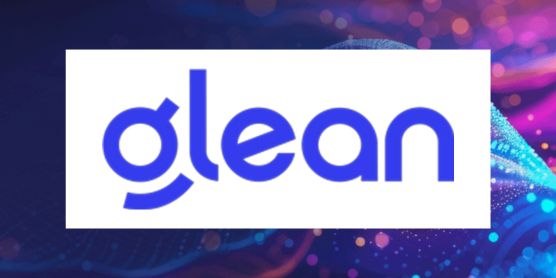
Partner Spotlight Enterprise AI Adoption: The Current Landscape and Future Trends
Glean
The adoption of enterprise AI tools is growing at an unprecedented pace, with generative AI (GenAI) becoming a keystone for growth and workplace innovation. Glean’s ‘The State of AI at Work in 2025’ report explores the current landscape of enterprise AI adoption, examining how fragmented implementations create an “AI tax” and how centralizing AI into unified platforms offers a more sustainable, collaborative, and cost-effective path forward for enterprises striving to leverage AI at scale.
The report highlights several key trends and findings in the landscape of AI adoption in enterprises:
● GenAI as a Keystone for Growth: The adoption of GenAI is accelerating, with over 65% of G2000 companies worldwide already leveraging the technology. This number is expected to increase to 80% by 2026. Generative AI is becoming a critical driver for growth and workplace innovation.
● The Hidden AI Tax: Many organizations face challenges due to fragmented AI implementations, leading to what we call the “AI tax.” This includes unnecessary expenses, maintenance headaches, and inefficiencies that slow down the organization. The report emphasizes the importance of centralizing AI into unified platforms to avoid these hidden costs and achieve a more sustainable and cost-effective AI strategy.
● Centralized AI Platforms: By adopting a centralized AI platform, companies can streamline AI training, speed up AI literacy across the business, and ensure consistent and high-quality AI education for all employees. This approach helps in balancing grassroots innovation with a centralized AI strategy, ultimately future-proofing AI integration in the enterprise.
● Enterprise Spending on AI: Enterprise spending on GenAI is projected to grow by 50% next year, with the number of AI-enabled applications increasing by 140%. This reflects a growing commitment to leveraging AI for various workflows and applications.
● Data Silos and Integration Challenges: Over 95% of IT leaders report that integration issues hinder AI adoption, with data silos being a significant barrier to digital transformation. The report discusses how centralized AI platforms can help overcome these challenges by providing a unified approach to AI implementation.
You can download a full copy of the report by clicking here.

Partner Spotlight Redefining Hybrid Work: Balancing Culture with Employee Expectations
Dan Root,
Head of Global Strategic Alliances, Barco
While large-scale remote work has proven to be feasible, executives have faced challenges in creating consistent hybrid work policies. Despite significant investments in workspaces and collaborative technologies, employees are reluctant to give up the flexibility they’ve grown accustomed to, highlighting that a uniform approach to the employee experience is impractical.
Instead of constantly changing return-to-office (RTO) policies, a more successful approach is to customize work arrangements to fit the specific needs of the organization, region, and employees. If your back-to-office efforts are not succeeding, the problem might be rooted in your company culture rather than with your employees.
Hybrid work policies have often fallen short of company expectations. In fact, 74% of organizations have adjusted their hybrid work strategies multiple times since 2020. Are senior leaders caught between wanting in-person collaboration and needing to offer modern work flexibility?
To strike the right balance, leaders must realize that the decision isn’t about what’s easiest or most cost effective. Relying on outdated technologies to shape policy decisions doesn’t resonate with employees. Leaders need to understand their employees’ daily experiences to provide hybrid technologies that support flexibility and foster innovation.
Hybrid work has more potential than full RTO mandates. Studies indicate that employees who split their time, working three days in the office and two days from home, tend to perform better, experience greater satisfaction, and have higher retention rates compared to those who work exclusively in the office.
However, establishing effective hybrid work routines takes time and deliberate effort. Rushed implementations often fail because decision-makers may quickly mimic competitors’ strategies. Organizations need to reshape their culture to support hybrid work, considering the technical and human needs of each team and individual. This requires the involvement of all stakeholders, including facilities, IT, operations, and HR. The complexities of hybrid work must be addressed with equally detailed policies and technology.
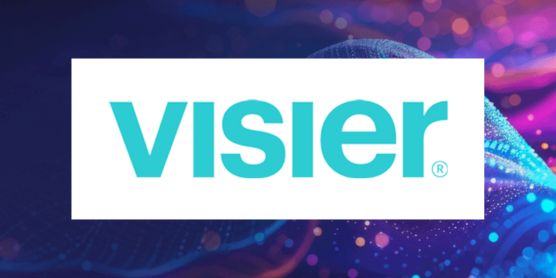
Partner Spotlight Harnessing Agentic AI for a Workforce Edge
Keith Bigelow,
Chief Product Officer, Visier
The next wave of AI is here, and agentic AI is poised to drive workplace transformation. Unlike digital assistants that respond to prompts, AI agents act autonomously, engaging in continuous workflows that require reasoning and adaptability.
These AI agents are well suited for transactional workflows in most departments like sales (e.g., Piper), customer service (e.g., Sierra), and IT (e.g., ServiceNow). However, their adoption comes with risks — such as employee resistance, selecting the wrong technology, or discovering that AI agents aren’t yet capable of handling delegated tasks. To successfully implement agentic AI, organizations must rely on three key leaders:
1. Line-of-business (LOB) leaders initiate AI adoption to solve business challenges (e.g., scaling customer experience) without linear full-time equivalent (FTE) growth. They own the decision, the business case, and accountability for the outcome. Without their leadership, adoption falters.
2. CHROs and HR leaders play a crucial role in managing workforce impacts. If AI reduces staffing needs, HR ensures a smooth transition. If AI is meant to augment — not replace — employees, HR leads workforce planning and career development to retain and redeploy talent.
3. CIOs and IT leaders oversee AI selection, deployment, and optimization. They ensure AI agents integrate seamlessly into business processes and maintain continuity when AI hands off to employees in complex scenarios.
With this trio of HR, IT, and LOB leadership, organizations have a far greater chance of driving adoption and achieving their intended AI-powered productivity gains.
How CIOs Can Lead Workforce Transformation
Agentic AI is arriving at a time when companies are under pressure to boost efficiency, engagement, and retention while delivering strong business outcomes. CIOs play a pivotal role in enabling businesses to capitalize on AI’s potential. Here’s how:
• Partner with trusted vendors: AI agents interact with critical data and customers, making security and compliance essential. CIOs must ensure their organization selects proven, enterprise-grade AI solutions.
• Plan for systemic change: AI is more than an automation tool — it redefines decision-making, labor strategies (both human and automated), and technology ecosystems. CIOs must guide these changes while ensuring human oversight where necessary.
• Ensure business outcomes: AI deployment isn’t a single initiative — it will be an ongoing transformation across departments. CIOs must work with HR and finance to prioritize AI projects, establish business case templates, and hold teams accountable for results.
As AI reshapes work, CIOs can be the catalyst for productivity transformation — ensuring businesses not only adopt AI but achieve sustainable, strategic advantage.
To learn more, read the report: Embracing the AI-Driven Workforce.

Partner Spotlight AI’s Double-Edged Sword Should Empower Businesses to Thrive, Not Just Survive
Ben Young,
Field Chief Technology Officer, Veeam
AI is transformative and allowing us to ride the next technological wave of innovation. It is impacting how we live and work — streamlining automation and improving decision-making across every industry. But while it’s driving innovation, it’s also being used as a tool against us. The rise of AI has armed cybercriminals with unprecedented capabilities, enabling them to execute attacks with alarming precision and reach.
We’ve seen this play out with dark AI like FraudGPT and WormGPT. These tools, essentially “ChatGPT for hackers,” lack the guard rails that model platforms such as OpenAI, Claude, and Gemini build into their architecture. As the Cyber Security Agency of Singapore outlines in its Singapore Cyber Landscape 2023 report, malicious AI tools are making cybercrime more accessible than ever to a wider audience due to the low barrier to entry. Individuals with little technical expertise can now generate convincing, targeted phishing emails or write malicious code such as that used in ransomware attacks.
AI is also being used to manipulate trust, perception, and reputation. Google’s Threat Intelligence Group has highlighted in its Adversarial Misuse of Generative AI report that its AI has been misused by government-backed threat actors. This includes generating SEO-optimized content to influence economic and political issues. Iranian, Russian, and Chinese threat actors have been identified as using Google Gemini to research, seed content, and/or plan social media campaigns that drive their agenda and spread misinformation.
It’s not all doom and gloom. We can also leverage AI against attackers by changing the way we defend ourselves. Take backups, for example; these have traditionally been viewed as a last-resort insurance policy. That’s no longer enough. Veeam is focused on providing businesses with data resilience and with AI and security underpinning all aspects of it. More than protecting data, security and AI are layered throughout a business’s data environment. This assists with identifying ransomware patterns and indicators of compromise, spotting suspicious encryption activity, and analyzing patterns between retention points. With a data resilience strategy that encompasses data security and intelligence in addition to backup, recovery, and portability, businesses can catch an attack before it compromises critical systems or spreads wider throughout the estate.
This approach also enables third-party security vendors, many of which businesses have already made an investment in, to leverage information sent from the data environment. Their own implementations of AI help detect threats, such as those subtly indicated in firewall or log aggregation spaces, giving businesses greater value in their security investments. Additionally, security vendors can trigger alerts back to the data environment, automating critical and orchestrated actions to take place, such as just-in-time backups.
With these capabilities realized, once security and intelligence/AI are considered an integrated part of data resilience, it’s time more businesses treat their data environment as an active security asset rather than merely an archive.
Lastly, the impact and use cases of AI and data go well beyond detecting threats. While backup data has always been valuable, accessing its insights used to be a slow, complex process. Advancements in technologies, such as Veeam’s Data Integration API, has changed that, allowing any system or data pipeline to leverage data that would otherwise remain underutilized.
AI-powered use cases for this data include identifying compliance risks, tracking sensitive data, and even gaining insights to make critical business decisions — all at scale thanks to AI’s ability to process large amounts of data quickly and accurately.
The question isn’t just how to defend against AI-powered threats. It’s about how to build an AI-enabled ecosystem for business data that works together, fights back against the ever-growing sophistication and volume of attacks, and yet can provide tangible benefits at the same time. As we enter this new era, AI will become necessary for businesses to survive, but the ones that thrive will be those that treat AI not just as a tool, but as a strategic asset in their architecture.

Partner Spotlight AI Agents: Why They Need an Operational Database
Tim Rottach,
Director of Product Marketing, Couchbase
Introduction
AI agent applications are poised to transform the way employees and customers interact with computer systems. By gathering data, reasoning and executing tasks, these agents will automate human workflows across countless current use cases — from internal support bots to sophisticated customer-facing services — across every industry. Some are looking toward analytical databases to power these agents. However, AI agents are fundamentally operational in nature, much like traditional web applications, mobile apps and microservices. Recognizing this distinction is critical for selecting the right data platform.
What Are AI Agents and How Do They Work?
Unlike legacy applications restricted to rigid inputs and predefined logic, AI agents dynamically interact with their environment. They continuously receive and process data from multiple sources, perform real-time reasoning and autonomously execute tasks. They use various tools, functions and system prompts to retrieve relevant data, ask the next questions, refine their reasoning and take action.
Because agents rely on large language models (LLMs) or other advanced machine learning techniques, they need to operate in real time and require a data infrastructure that supports frequent, low-latency read and write operations. This is why an operational database — one designed for immediate, ongoing interactions rather than delayed batch processes — is essential.
The Data Sources – A Retail Example
A typical AI agent in a retail setting might use a wide array of operational data, combining both classic and AI-specific data. Here are just a few examples:
● User profiles and preferences: Enables hyper-personalized recommendations and customer experiences.
● Product catalogs with media: Allows for a richer user experience.
● Inventory data: Ensures items are in stock and conveniently located for fulfillment.
● Web calls and external APIs: Agents can retrieve additional information — such as celebrity associations, contextual reviews or market sentiment — to enhance recommendations.
● Historical sales data: Supports upselling, cross-selling and predictions of what a customer might purchase next.
● Unstructured content: Documents such as PDFs detailing product usage or care instructions can be integrated to improve the quality of agent responses.
● Vector embeddings: Required for semantic search and retrieval-augmented generation (RAG), drastically improving LLM responses without retraining custom models.
Agentic AI also needs to maintain information on the tools and functions that developers create. This metadata helps the agent choose which function or data source to invoke, continuously evolving its skill set. Additionally, semantic and conversation caching allows the agent to reuse existing context, improving speed and reducing costs by minimizing repeated requests to expensive LLM endpoints. As prompts and tools evolve, the system must capture and maintain the history of interactions, including transcripts, decisions and intermediate reasoning steps. For other industries, the core operational data types may differ (for instance, sensor readings in manufacturing), but the underlying principle remains the same: AI agents require a capable operational database that can handle diverse data formats, frequent updates and real-time accessibility.
Why an Operational Database Matters
Using multiple, disparate technologies — one for caching, another for vector search and another for transactions — can degrade performance, hinder management and complicate data governance. For AI agents to deliver timely results, all these data interactions must occur with minimal latency.Operational databases excel at high-velocity, high-concurrency workloads that demand real-time reads and writes. They also typically offer robust replication and clustering features to ensure high availability, which is critical for AI-driven applications that must remain responsive.
Conclusion
AI agents are set to become a cornerstone of modern computing. Choosing a platform specifically designed for speed, scalability and low-latency interactions ensures AI agents can effectively gather, process and act on information — delivering robust, context-rich experiences to end users. By their very nature, they generate and rely on real-time data, making operational databases a necessity for AI agents.
Couchbase AI Services have been introduced by Couchbase to securely interact with AI models, incorporate unstructured data and provide out-of-the-box semantic and conversation caching. The Agent Catalog feature makes it easier for developers to discover, manage and secure the tools and functions an agent needs, integrating seamlessly with popular AI frameworks such as LangChain. Additionally, Couchbase’s multipurpose database eliminates the need to use multiple, single-purpose databases, reducing the complexity and costs of application development.

Partner Spotlight Network Connectivity is the Key Priority for APAC Enterprises to Achieve Successful AI Integration
Expereo
The adoption of AI technologies is rapidly increasing across the Asia/Pacific (APAC) region. Throughout 2024, enterprises across almost all sectors, and of all shapes and sizes, trialed and implemented new AI solutions in a bid to streamline operations, enhance productivity, and ultimately improve end products and services. However, amid this boom of new AI tools being deployed, it’s become apparent just how key having a robust network infrastructure is to the success of these deployments.
AI tools typically generate vast amounts of data, meaning that high levels of application performance and reliable connectivity to datacenters are always required. Slow or sluggish network performance can significantly hinder the uptake of AI technologies and, as a result, leave organizations without some of the expected benefits that these tools can bring. In fact, Expereo’s Enterprise Horizons 2024 research report revealed that APAC tech leaders cited network performance (e.g., application responsiveness or latency) as the main hurdle to preventing enterprise-wide AI implementation.
Therefore, when planning to deploy AI solutions, it is crucial for CIOs to consider their existing network infrastructure and the likely application performance in data-intensive environments. Our research found that just under a quarter (23%) of APAC businesses believe their current network connectivity cannot support large amounts of data from AI projects. This is why investment in the network infrastructure itself — and application performance — alongside continued investments in AI tools is so vital. A failure to do so could lead to an outdated network being unable to cope with high demand — and organizations failing to realize the benefits of AI to drive their operations forward.
Effective AI deployment also requires visibility into the health and performance of the network. Having the right visibility of network performance has been recognized as a pain point by almost half of APAC enterprises. The good news is there are network visibility tools, such as our expereoOne platform, to provide the necessary insights to monitor and optimise network performance. These tools offer detailed visibility down to site level, allowing businesses to identify and address bottlenecks that could impact AI applications.
As AI tools become ever more central to business operations, CIOs across APAC must evaluate the impact on their networks and prioritize investments in infrastructure and connectivity solutions that deliver enhanced performance and provide clear visibility. By doing so, they can ensure that their AI investments deliver maximum value and propel their enterprises to new heights.
Download to see what’s keeping technology leaders awake at night and how you can ensure transformation success for your business.

CXO Spotlight Tan Shui-Min on the Evolving Technology Landscape
Tan Shui-Min,
Chief Information Technology Officer, National University of Singapore
As digital transformation accelerates, organizations must rethink how they harness technology for innovation and efficiency. Shui-Min Tan, Chief IT Officer at NUS, believes that AI and automation are reshaping the way we work, learn, and collaborate.
“The future of technology isn’t just about advanced tools — it’s about equipping people with the right digital skills to navigate change,” she shares. At NUS, this means fostering AI literacy across all levels, from IT specialists developing AI-driven solutions to staff and students leveraging AI for smarter decision-making.
Beyond skills, Shui-Min emphasizes the importance of ethical AI adoption and cybersecurity. “Technology should empower, not replace. We must strike a balance between automation and human intuition while ensuring security and trust,” she adds.
A dedicated team at NUS is driving this vision with AI-Know, a centralized platform offering a suite of AI tools to enhance productivity and innovation. The latest addition, AI-Create, empowers users to build their own custom generative pre-trained transformers easily through a no-code interface, making AI more accessible than ever.
Through strategic partnerships with academia, industry, and government, Shui-Min is committed to building an AI-ready workforce and driving sustainable digital innovation at NUS and beyond!

Partner Spotlight Why Cybersecurity Risk Deserves a Seat at the Boardroom Table: A CISO’s Blueprint for 2025
Himanshu Kathpal,
VP, Product Management, Platform and Technologies, Qualys
Once, cybersecurity was an afterthought — a technical fix to a technical problem. Today, cybersecurity risk (cyber-risk) has become the pulse of business strategy. It is no longer a question of whether security belongs in the boardroom; rather, it is how fast leaders can adapt to a world where digital trust defines market winners.
Consider a business poised for expansion, fueled by cloud agility, AI-driven innovation, and an ecosystem of third-party partners. Its growth looks unstoppable. Yet, beneath the surface, the digital foundation is shifting. Assets multiply across hybrid environments faster than they can be cataloged. Shadow AI proliferates. Unknown vulnerabilities hide in plain sight. In this reality, static security controls are like using last year’s maps to navigate a city that rebuilds itself every day.
The data backs it up — research shows that nearly 70% of breaches stem from unmanaged or unknown assets. Still, security teams remain stuck in reactive cycles, chasing visibility after the fact. Meanwhile, enterprises juggle 70+ security tools on average, with each producing a flood of alerts. More data, less clarity. Security leaders are not short on information; instead, they are drowning in it.
Executives, however, do not want noise. They want clarity. They are asking sharper questions: What is the potential financial exposure of a breach? Which risks matter most to our growth trajectory? How do cyber-risks stack up against operational, regulatory, or market risks? The conversation must shift from technical analysis to strategic foresight.
Some CISOs are already driving this shift. They are moving beyond vulnerability counts and patch metrics, leveraging advanced platforms to aggregate data, cut through the noise, and surface what truly matters. With a real-time, unified view of the organization’s risk posture, they are empowering leadership with the insights to make faster, smarter business decisions.
This is where cybersecurity transcends its defensive roots. It is no longer confined to blocking attacks; it is far more proactive, acting as a catalyst for speed, innovation, and lasting resilience. The most forward-thinking CISOs are leading this transformation, redefining security as a strategic advantage and demonstrating how cybersecurity fuels expansion into new markets, protects innovation, and earns the trust that sets brands apart. In this new landscape, cyber-resilience is not a sunk cost but a pillar of competitive advantage. For those who get it right, cyber-risk stops being a liability to control and becomes an opportunity to lead.
Want to dive deeper into exclusive insights and strategies on a risk-driven approach to cybersecurity? Read the full blog.

CXO Spotlight The Bond Between Technology Advancements and Workplace Transformation
Bryan Lee,
Managing Director, Head of Technology Architecture, Bank of Singapore, Asia’s Global Private Bank
AI, quantum computing, and digital workplace transformation are redefining industries and enhancing customer experiences. Agentic AI is driving hyper-personalization, automating workflows, and improving decision-making, while quantum computing could revolutionize cryptography and complex problem-solving processes. As these technologies evolve, organizations must rethink architectures to integrate them securely and efficiently, ensuring seamless and intelligent customer interactions.
Modern digital workplaces are also reshaping how teams operate. AI-driven automation, cloud-based collaboration, and hybrid work models are optimizing productivity while enabling faster, more responsive customer services. Cybersecurity remains critical, with zero-trust frameworks and confidential computing protecting sensitive data. As businesses evolve, technology leaders must balance innovation with security, resilience, and operational efficiency to deliver exceptional customer experiences in an increasingly digital world.
Stay tuned for exciting news!
Lorem ipsum dolor sit amet consectetur. Dui egestas in senectus suspendisse enim.Lorem ipsum dolor sit amet consectetur.
Register Now







